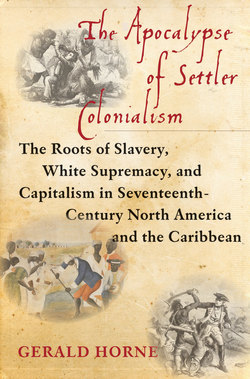Читать книгу The Apocalypse of Settler Colonialism - Gerald Horne - Страница 9
ОглавлениеCHAPTER 3
The Rise of the Merchants and the Beheading of a King
Oliver Cromwell was “the greatest Englishman of the seventeenth century,” said Theodore Roosevelt in the midst of a fiery philippic against the Lord Protector’s foe in Madrid, words that simultaneously rationalized Washington’s knockout blow against the Spanish Empire, which had recently been administered in Cuba and the Philippines. Roosevelt was completing what Cromwell had begun.1 That the embodiment of U.S. imperialism would salute an anti-monarchist Puritan should be seen as logical. The republicanism that Cromwell foreshadowed would erupt in 1776. The republicanism that evolved in North America found it difficult at best to corral the Pan-Europeanism that set it in motion (witness the anti-Catholicism and anti-Semitism of early nineteenth-century New York, for example). Likewise, Cromwell’s anti-monarchical project, engaging in bloody anti-Irish pogroms, created the template for republicans staring down the indigenous and slave revolts in the Americas.
In short, England and the immediately surrounding territories were rocked by internecine martial conflict between the early 1640s (actually as early as 1639) and the late 1650s, when Cromwell passed from the scene and the monarchy was restored about a decade after the king had been beheaded in 1649. In short, 1640 to 1660 transformed the Isles; though Cromwell died, neither Cromwellian republican nor merchant capital was subdued altogether, and this led in 1688 to their roaring comeback, when the monarch was placed on a glide path to becoming a figurehead. The emerging primacy of those captivated with the idea of captivity of Africans and Native Americans were then to rise on the curious platform of being tribunes of “enlightenment” and progress, an ideological victory so grand that even those who supposedly sought to overthrow the capitalist draper in the deceitful finery of republicanism accepted this fundamental canard.
The losing side in this titanic European conflict had a justifiable fear that they would become bonded laborers, particularly in the Caribbean, which gave them an incentive to fight with ferocity, just as it normalized what was unfolding in any case: enslaving Native Americans and Africans. By 1642 a quarter or even a third of the adult male population in the regions surrounding London were in arms at one time or another, according to one estimate. Casualties, as a result, were quite high; as a percentage of the English population, they were higher than for the British dead during the First World War. The figures for Scotland were higher, and for England, much higher still. Unremarkably, foreigners found these Europeans to be rude, aggressive, and violent.2 Testimony from indigenes and Africans doubtlessly would have been even more denunciatory.
Another estimate claims that 10 percent of all adult males—about 140, 000 out of a population of five million—were armed.3 Yet whatever the actual figure, the cruel reality was merciless murder in the streets and in the fields, creating a dislocation that made faraway Barbados or the deceptively named New England seem like paradise by comparison. Moreover, the relentless bloodletting also created a labor deficit in the Caribbean, swelling in importance with every passing day, thereby contributing to a growing mania for more enslaved Africans. (This would be a problem throughout the era of the slave trade. By 1642 the Dutch, still a major force in this dirty business, were accusing Africans in Africa of “criminal matters,” that is, “conspiring against the sovereignty” of the Netherlands and being “rebellious or seditious” besides.)4
The ousting and beheading of a monarch was the most direct expression of the anti-monarchism involved, but this conflict was also an adjunct of Europe’s Thirty Years’ War, then lurching to a close. There were pent-up tensions brought by class displacement, as newly enriched merchants with wealth based in colonies displaced their less blessed counterparts. There was also religious cum ethnic conflict, denoted as mostly Catholic Irish versus mostly Protestant England. And much more. The ostensible religious conflict included the unavoidable point that gold and silver from the Americas were enabling Spain, and the time had come to deny Madrid this revenue and redirect it toward London. Moreover, the impending end of the Thirty Years’ War indicated minimally that the long years of steady Habsburg advance had ended, creating a vacuum that London could well fill.5
